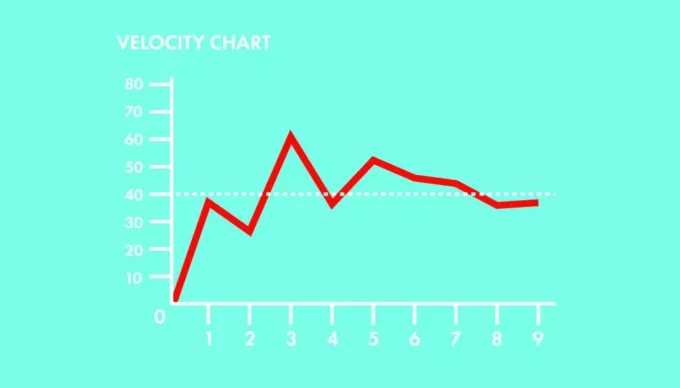Thanks to its flexibility and adaptability to changing requirements, agile methodology has become increasingly popular among software development teams. However, to reap the full benefits of Agile, teams need to focus on optimizing their delivery process and improving time-to-market. One of the most effective ways to achieve this is by using Scrum velocity as a key metric. On this website, you can get help.
What is Scrum velocity?
Scrum velocity is a measure of the amount of work a team can complete during a sprint, which is typically a two-to-four-week period. It is calculated by summing up the number of story points completed in a sprint. Story points are a measure of the complexity and effort required to complete a task, as estimated by the team.
By tracking Scrum velocity, teams can gain valuable insights into their performance and make data-driven decisions to optimize their delivery process. Here are some ways teams can use Scrum velocity to improve their Agile delivery:
1. Identify bottlenecks and inefficiencies

Scrum velocity provides a clear picture of how much work a team can accomplish in a given sprint. If the team’s speed is consistently lower than expected, it may indicate that there are bottlenecks or inefficiencies in the delivery process. By analyzing the data, teams can identify the root cause of the issue and take corrective action to improve their velocity.
For example, if the team’s velocity is consistently low due to a lack of testing resources, they can address this issue by hiring additional testers or finding other ways to improve their testing process. By identifying bottlenecks early, the team can take proactive measures to address them, improving their delivery speed and time-to-market.
2. Set realistic goals
Scrum velocity can also help teams set realistic goals for future sprints. Based on their historical performance, teams can estimate how much work they can realistically complete in the next sprint and adjust their goals accordingly. This helps to avoid overcommitting and ensures that the team can deliver on its promises.
For example, if the team’s velocity is 20 story points per sprint, they can estimate that they will be able to deliver a certain amount of work within a specific timeframe. This information can be communicated to stakeholders and clients, so they have realistic expectations of what can be delivered.
3. Track progress

Scrum velocity provides a clear measure of progress toward project goals. By tracking velocity over time, teams can see how much work has been completed and how much is left to do. This helps to keep the team focused and motivated, as they can see the tangible results of their efforts.
4. Improve estimation accuracy
Scrum velocity is closely tied to estimation accuracy. As teams become more familiar with the estimation process, they can refine their estimates and improve their velocity. This helps to reduce the risk of delays and ensure that the team can deliver on time.
For example, if the team estimates that they can complete 30 story points in a sprint but only completes 20, they can analyze what went wrong and adjust their estimation process accordingly.
5. Measure team performance
Scrum velocity can be used to measure team performance over time. Teams can use this information to identify trends and track their progress in improving their Agile delivery.
6. Plan future sprints
By looking at historical velocity data, teams can plan future sprints more accurately. This can help them set more realistic goals for each sprint and avoid over-committing to work they cannot realistically complete.
For example, if the team’s velocity is consistently 20 story points per sprint, they can plan their sprints accordingly to ensure that they are not committing to more work than they can realistically complete. This can help the team avoid the stress and pressure of trying to meet unrealistic expectations, improving their overall productivity and time-to-market.
7. Use velocity to set realistic expectations
Scrum velocity helps teams understand how much work they can realistically complete in a given sprint. This can be used to set expectations with stakeholders and clients on the amount of work that can be delivered in a specific time frame.
How to Use Scrum Velocity to Identify Bottlenecks and Improve Performance?

Here are the steps to use Scrum Velocity to identify bottlenecks and improve performance:
- Establish a baseline: To use Scrum Velocity effectively, you need to establish a baseline for your team’s performance. Start by tracking your team’s velocity over several sprints to determine an average velocity.
- Monitor your velocity: Continue to track your team’s velocity over multiple sprints. If you notice a sudden drop in velocity, it may indicate a bottleneck in the development process.
- Identify the bottleneck: Once you have identified a drop in velocity, investigate the cause. It may be a team member who is overloaded with work, a lack of communication or collaboration, or an inefficient process.
- Take action: Once you have identified the bottleneck, take action to remove it. For example, if the bottleneck is caused by an overloaded team member, you may need to redistribute tasks or provide additional support to that team member. Alternatively, if the bottleneck is caused by a lack of communication, you may need to implement measures to improve communication and teamwork.
- Track your progress: Continue to track your team’s velocity over multiple sprints to determine if your actions have improved your team’s performance.
Therefore, Scrum velocity can be used to improve time-to-market and optimize Agile delivery. By tracking their velocity, teams can identify bottlenecks, set realistic goals, track progress, improve the estimation accuracy, and optimize their capacity. By leveraging this key metric, teams can increase their productivity and deliver high-quality products faster.
In conclusion, using Scrum Velocity to optimize agile delivery and improve time-to-market can be highly effective. By tracking the team’s progress and identifying bottlenecks, the team can make adjustments and optimize their performance. Scrum Velocity can also help the team to set realistic goals, estimate accurately, and improve their delivery process. Ultimately, using Scrum Velocity can result in faster time-to-market, better quality products, and more satisfied customers. However, it’s important to remember that Scrum Velocity is just one tool in the agile development toolbox, and teams should use it in conjunction with other metrics and techniques to achieve the best results.









